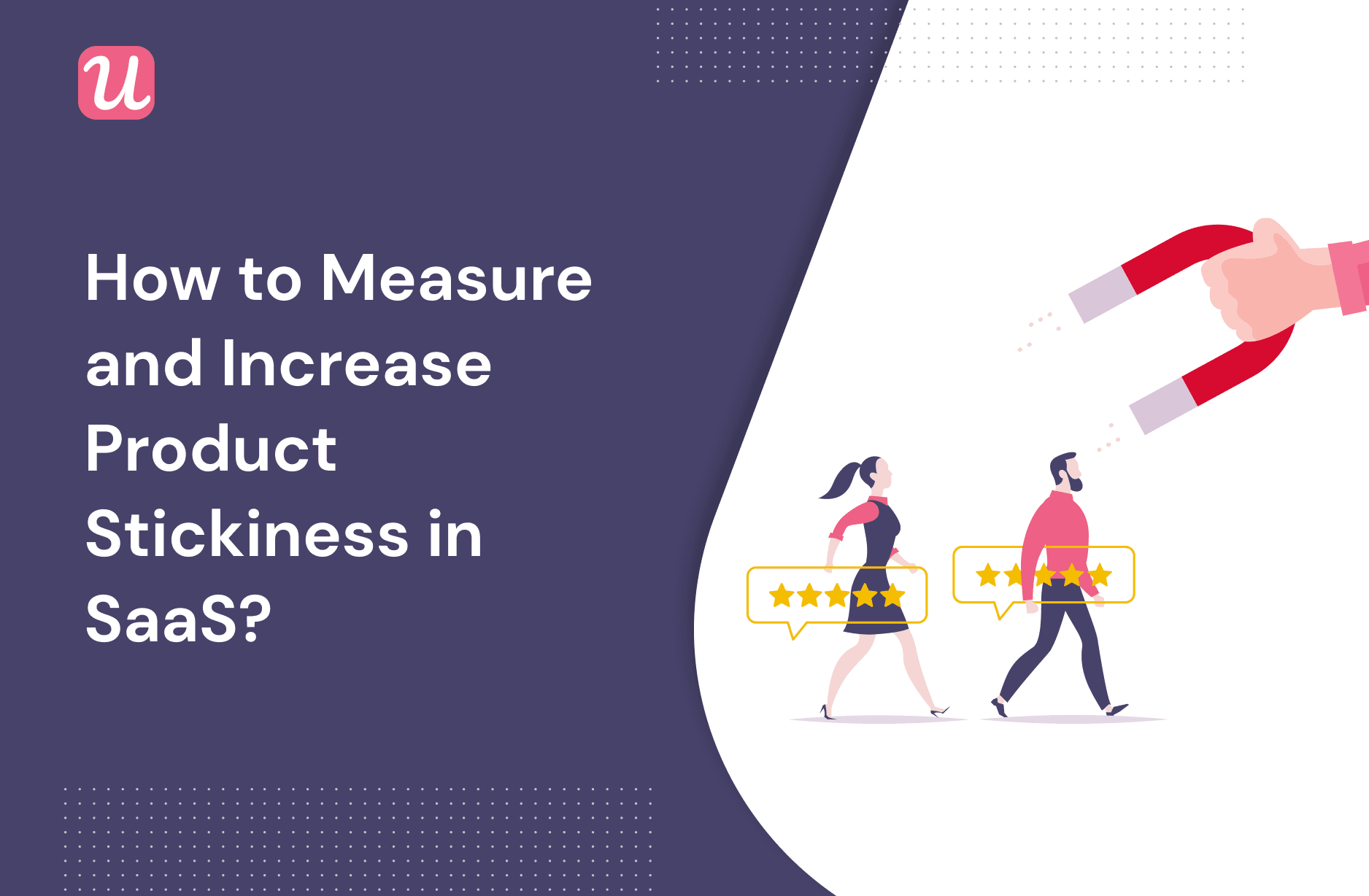
Wondering what product stickiness really is and how you can improve it to boost retention?
The SaaS world has become more competitive than ever before. With that being said, it’s important to not only attract new users but retain existing users in the long run.
A sticky product provides an excellent user experience and drives feature adoption across the customer journey. This, in turn, ensures user retention.
So, let’s look at how you can make your customers stay loyal to you.
Try Userpilot Now
See Why 1,000+ Teams Choose Userpilot

What is product stickiness in SaaS?
In SaaS, product stickiness refers to the tendency of users to keep returning to your product because it’s engaging and valuable to them.
A sticky product becomes a part of your customers’ daily lives. Stickiness ensures that your customers use your product more frequently and, renew their subscriptions regularly.
Why does product stickiness matter?
Sticky products help reduce churn. In this era of product-led growth, where businesses use their product as a selling point, stickiness means your customers are experiencing the value you created for them.
High stickiness makes it easier to offer customers even more value through upgrades and add-ons. Therefore, you can expand your monthly recurring revenue via upsells, cross-sells, and add-ons.
As a result, your customer lifetime value increases. This further drives the growth of your SaaS business as you can spend more on customer acquisition.
How to measure product stickiness rate?
Product stickiness rate is one of the key product metrics you should measure to know whether your product creates value. It’s the rate at which your users return to your product on a regular basis.
Stickiness is equal to the ratio of daily active users (DAUs) to monthly active users (MAUs). For example, if you have 2,500 daily active users and 5,000 monthly active users, your stickiness rate is 0.5 or 50%.
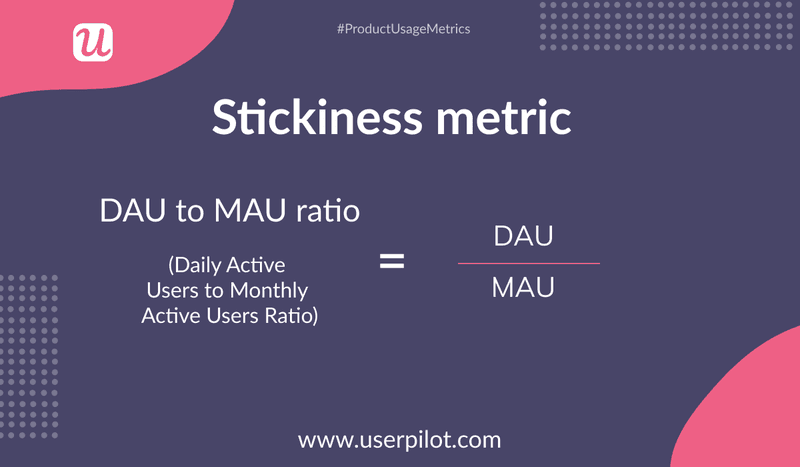
This rate alone can’t tell you which users are retained and which are churning. Therefore, you should segment users based on their use cases and perform cohort analysis.
Moreover, if your app is a low-frequency usage app per customer, the stickiness rate might not provide a true picture. So, you would have to use product metrics like customer retention rate, customer churn rate, and customer lifetime value.
What is a good stickiness rate?
A low stickiness rate doesn’t have to mean your product isn’t performing well. Whether your stickiness rate is good or bad largely depends on the type of your product or business and your product’s desired usage.
Across all industries, an average of 20% stickiness rate is considered good. It’s considered exceptionally good if the rate is 25% or more.
The average stickiness rate for the SaaS industry, in particular, is 13%. This is a little less than 4 days of activity per user per month. In addition, the median rate for SaaS is 9.3%, which is less than 3 days of activity per user per month.
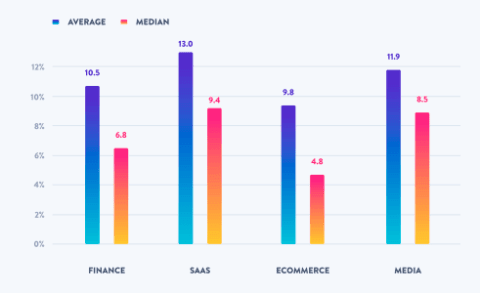
What are product stickiness metrics?
Apart from the DAUs/MAUs ratio, there are 2 other product stickiness metrics that you should track.
- Open rate
- Lness
Open rate
Open rate is equal to the percentage of customers who set up your product and used it within a specific period.
The more frequently customers need to use your product, the higher the open rate. For products with low stickiness, the open rate might be 10% or less per month.
However, if your product sends out notifications frequently, users might open the app without the intention to really use it.
Lness
The Lness distribution provides a good measure of product stickiness over time. The greater the Lness percentage, the more sticky your product is.
Lness gives the number of days customers visited within a given period. For instance, L19+/28 provides the percentage of users who return to your product at least 19 times per month.
Likewise, L4+/7 gives the percentage of users who visited your product a minimum of 4 times per week.
3 tips to increase product stickiness
Tracking the stickiness metrics won’t be enough if you don’t feed the insights into your strategies. If you want to encourage users to keep returning to your product, you need to help them continue benefiting from it.
To this end, let’s go over the 3 tactics you can apply to increase product stickiness.
- Improve product stickiness by increasing feature adoption and engagement
- Offer valuable upsells by showing users what they are missing out
- Use micro surveys to collect feedback and act on it.
Improve product stickiness by increasing feature adoption and engagement
Your new users and existing ones need to understand your core value proposition to really engage with your product. Moreover, they need to be aware of all your product’s features and their functions so they can choose the features they need.
If they don’t know the features properly they might think that your product doesn’t have the necessary functionalities and doesn’t meet their expectations. This, in turn, will result in churn.
Therefore, to drive feature adoption and engagement, you should improve your onboarding experiences. Here are a few tips for you.
Create a frictionless signup flow
You should make your signup flow as frictionless as possible so that users get a good initial onboarding experience. You can omit any step that seems rather redundant or irrelevant.
Use a welcome screen
Welcome screens are a great way to set a good first impression. Aside from greeting new users, a welcome screen lets you collect useful information about them, such as their goals, roles, and jobs-to-be-done.
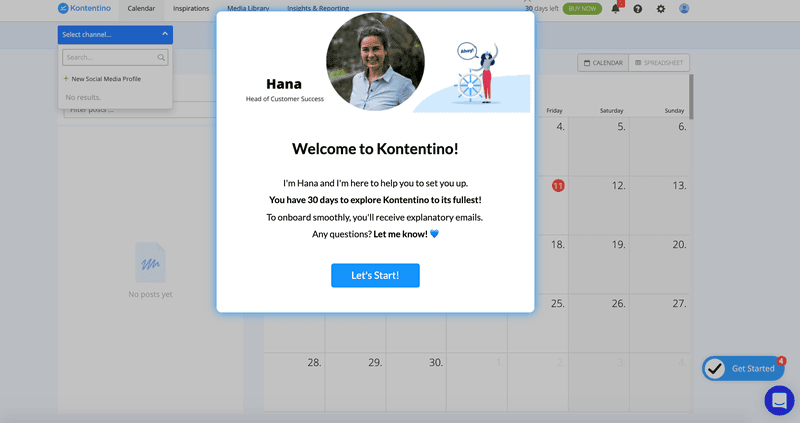
You can do this by including a micro survey in the welcome screen. Then, you should use this information to segment your users based on their personas and personalize onboarding experiences for each customer segment.
Help users reach their Aha! moment quickly
After impressing your users with a good welcome screen, you should ensure that they realize your product’s value quickly, i.e., reach their Aha! moment.
Keep in mind that onboarding doesn’t stop with a welcome screen. Rather, it’s a continuous process needed to keep your users engaged throughout their lifecycle.
As users engage more and more with your product over time, you have to create multiple such Aha! moments across the customer journey.
Use interactive walkthroughs to enhance the onboarding experience
Interactive walkthroughs are guides that direct users to the features they may need and thus, help them experience your product’s value.
They allow you to guide users contextually by showing them the next steps they should take. For example, they would push a user to adopt a certain feature in step 2 only after they’ve completed step 1.
This way, customers can control what they experience instead of feeling forced to use a feature they don’t need yet.
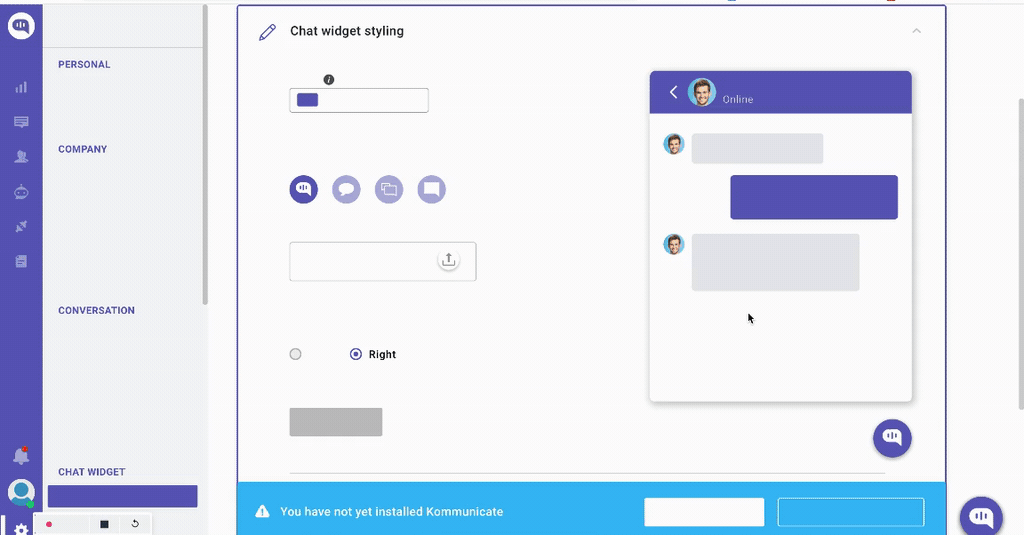
Use in-app messaging in a contextual way
You shouldn’t bombard your users with messages that are irrelevant to them. In-app messages need to be contextual and timely, based on the stage of the user journey. There are different types of these messages, such as modals, announcement bars, and tooltips.
With mobile SDK, you can create targeted onboarding flows using slideouts, carousels, and push notifications without writing extra code.
Expose your new features to users using in-app announcements
In-app announcements are a contextual means of exposing your new features to customers. For example, you can use in-app modals to let users know how the new feature can help them.
Blindly introducing features is never a good idea. Thus, to ensure that the feature announcements are relevant to users, personalize the message for different user segments.
Use secondary onboarding to drive feature discovery
Secondary onboarding helps customers find, engage, and use the features they need the most. It’s where the in-app messaging we talked about earlier comes in handy.
More feature discovery leads to more product usage, which leads to more value and, thus, more stickiness.
When a feature is easy to use, you can use tooltips to steer users to the feature. On the other hand, when the feature is relatively complex to understand, you can use a combination of walkthroughs and checklists to guide users.
Below is an example of Postfity, a social media scheduler. Their churn survey revealed that users were leaving because they were unable to find features that were already inside the app.
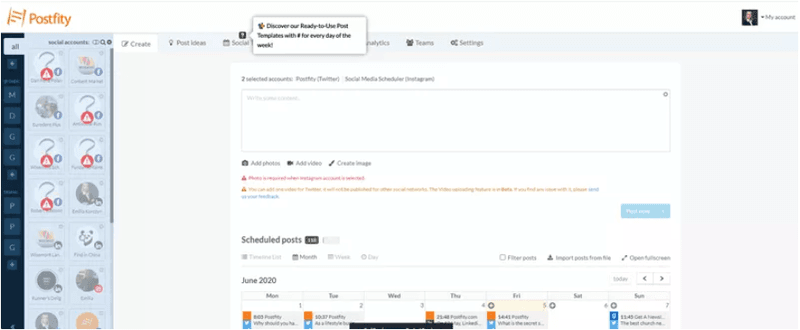
A/B test different methods of engagement and analyze your feature adoption rates
A/B test the various user experiences you create to check which ones bring about faster and greater feature adoption rates. For example, if you create a tooltip for informing users about a feature, A/B test its performance.
Moreover, test the various types of content like images and gifs to learn what results in more engagement.
Offer valuable upsells by showing users what they are missing out
Upsells are not just a great account expansion tactic but also valuable in exposing users to more of your product’s value.
Proactively offering upsell opportunities in a contextual way will increase user retention and product stickiness as users get more value.
Fear of missing out (FOMO) is one of the most useful and persuasive tactics to get customers to upgrade. Some of your customers just need to discover a feature they don’t know they need.
Here’s an example of Miro. The company offers users to upgrade to a premium plan by promoting private boards as a premium feature while making all other boards public by default.
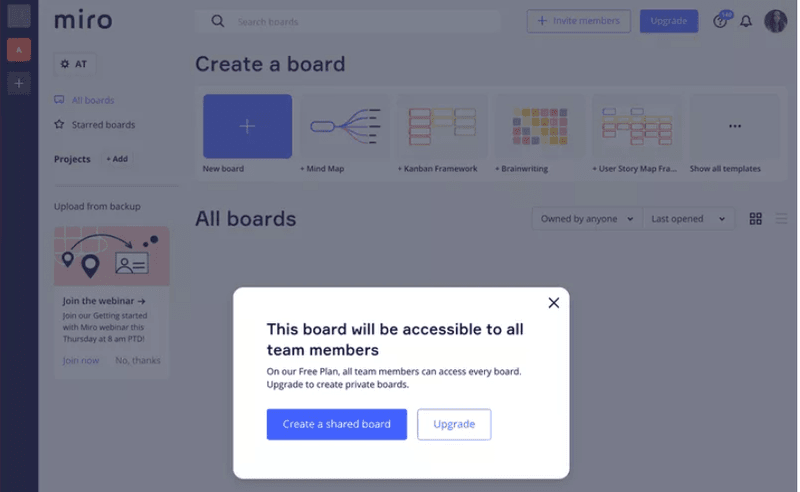
You should analyze user behavior and their psychographic and demographic data to better understand your customer base. This will make it easier for you to be proactive if you know where your customers are from, how they think, and what their goals are.
If you approach users with untimely upsells, new users may see this as just a money-making scheme. Therefore, you should wait for them to reach their Aha! moment and activate first.
Use micro surveys to collect feedback and act on it
Micro surveys are short, engaging surveys that allow you to get valuable quantitative and/or qualitative user feedback.
In-app micro surveys can help you get detailed qualitative feedback on particular aspects of a feature. You can use the insights to make any necessary improvements to the feature. This is why it’s also important to always collect feedback on new features you launch.
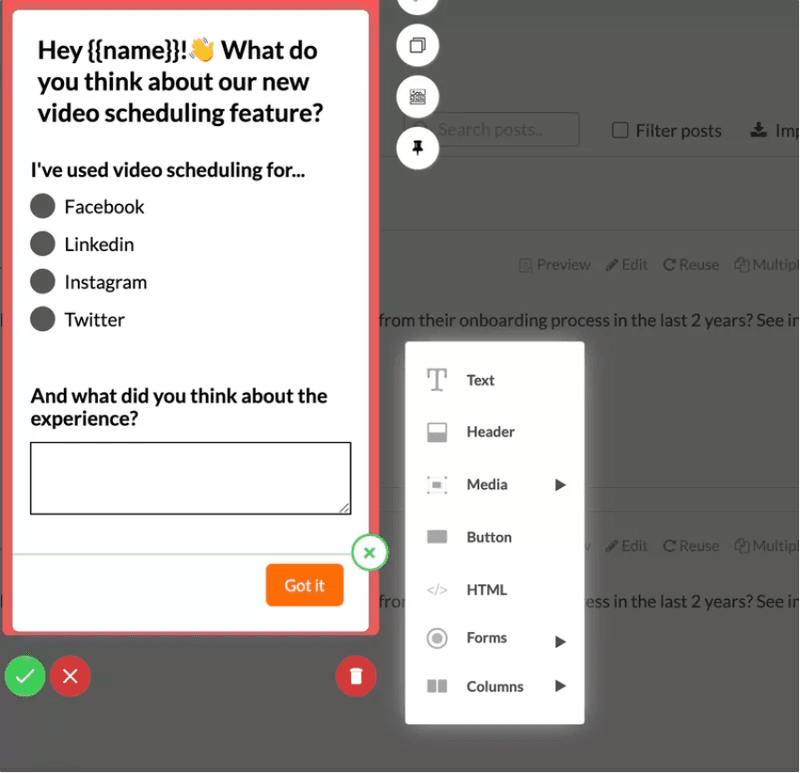
We would recommend you use customer satisfaction surveys to:
- Identify friction points and eliminate them
- Help your customer success teams know customer pain points
- Provide improved customer support
- Enhance your product’s features
Here are 4 popular customer satisfaction surveys you can use:
- Customer satisfaction score (CSAT)
- Product-market fit (PMF)
- Net Promoter Score (NPS)
- Customer effort score (CES)
Wrapping it up
Product stickiness happens when most of your customers don’t want to leave it as they continuously get value from it.
Improved user engagement and high feature adoption rates indicate a high product stickiness. And the sticker your product, the higher your customer retention is.
Want to know how to achieve product stickiness and improve your customer retention rate? Get a Userpilot demo and see how you can do it code-free.






